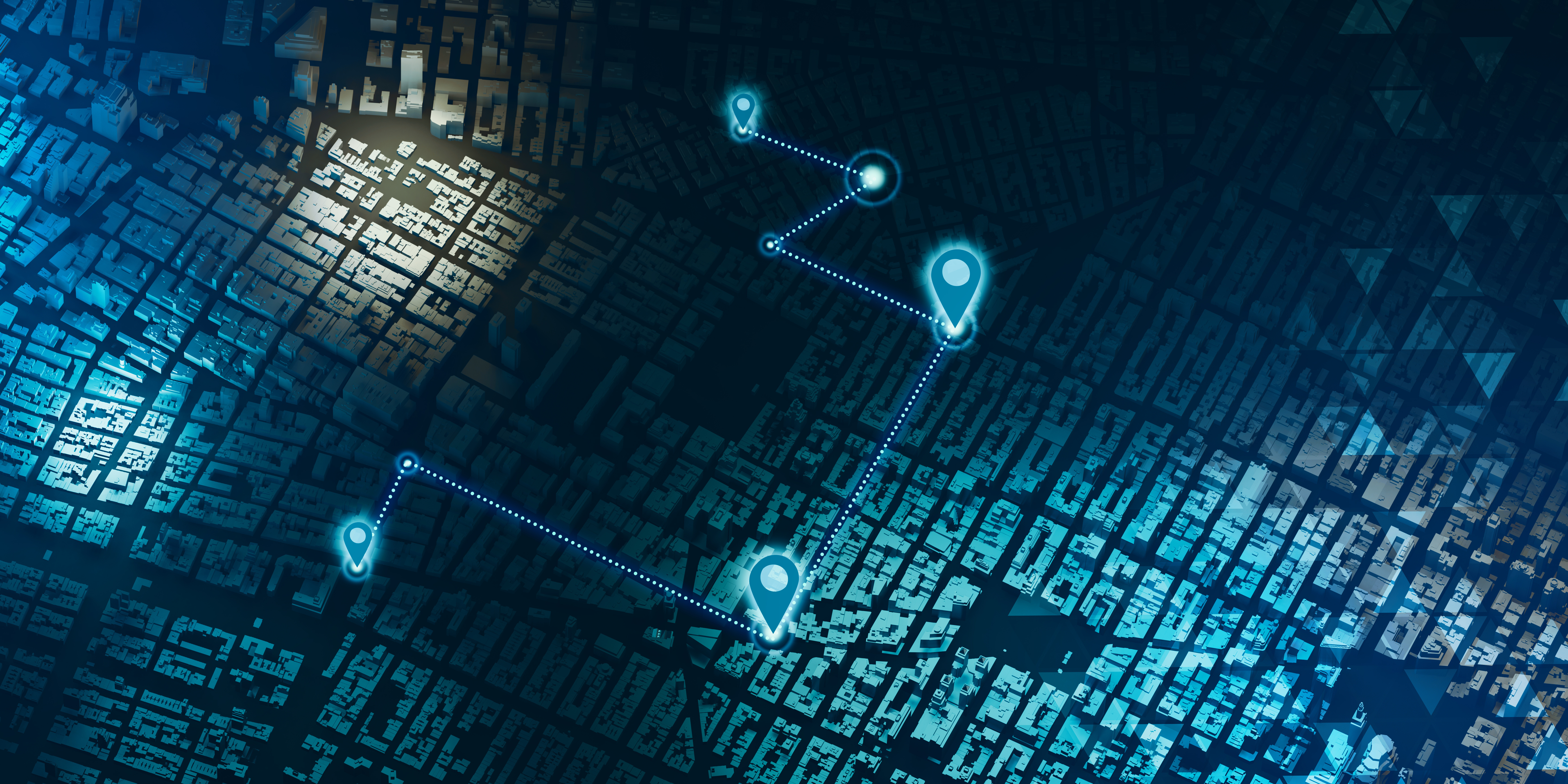Precision Distance Estimation Using GPS
Accurately estimates distance traveled and speed using GPS location technology.
GPS locations (called "way points") are typically collected and stored to keep track of the path of motion. When this data is used to estimate distance traveled, the error in the individual locations results in a bias, so that the actual distance traveled is much smaller than the calculated amount. One common strategy for reducing the impact of variation is to average a number of samples together into a single aggregate sample that has lower variation. This reduces variation and functional bias, but results in aggregation bias because (similar to sampling bias) it reduces the number of effective samples. Statisticians call this the variance-bias dilemma, and generally seek a level of aggregation that minimizes the total error for a given set of samples.
This SUNY Plattsburgh technology greatly improves the precision of distance estimates by applying corrections that improve accuracy on average. The technology uses a modular architecture that includes:
- Control Module monitors the runtime behavior in the system to optimize accuracy and power consumption within the constraints provided by the user interface.
- User Interface Driver Module provides location data and current operating characteristics. It allows the user interface to control the accuracy and power tradeoffs of the system.
- Data Module combines sensor data and computations to determine and record accurate location data.
- Sensor Modules each interact with a sensor to collect information about the device's location and motion.
- Local Algorithm Modules compute information about how the device moves in time and provide estimates that can be used to tune the accuracy-power characteristics of the system.
- Remote Algorithm Modules provide estimates of the accuracy possible with algorithms not present in the device so that the system can tune the accuracy-power performance of the data collected by the system for offline processing.

- Accurately estimates distances using consecutive waypoints that are much closer-spaced than using existing technology. For example, this technology can achieve 0.1% accuracy at 1.7 standard GPS error units while existing techniques achieve that accuracy only at 72 standard GPS units. This is a limiting factor for fishing fleet operators who typically travel in a sinusoidal pattern and must ensure that the period of the sinusoidal motion is long enough to be captured accurately by the GPS distance estimation.
- Maintains high accuracy even with substantial elevation changes. Because vertical error is 3 times higher than horizontal error, existing technologies must either supplement GPS with other elevation data or neglect the elevation changes to maintain any reasonable accuracy. Thus, this technology can report 3-dimensional distance traveled instead of just horizontal distance.
- Makes accuracy and accuracy-power tradeoffs more transparent to operators.
This technology can be useful to any application where distance traveled is important, including:
- Fitness tracking for consumers performing exercises such as running or walking.
- Fishing fleet operators tracking the distance traveled by fishing vessels to optimize fuel use.
- Distance and velocity computation for military and space vehicles, including drones, missiles, satellites, exploration robots.
Know-how based - This technology is protected by Trade Secret.
Technology Readiness Level (TRL): 6 Technology demonstrated in relevant environment.
This technology is available for licensing. This technology can be of value to any market in which accurate tracking of distance traveled is critical.
Patent Information:
| App Type |
Country |
Serial No. |
Patent No. |
Patent Status |
File Date |
Issued Date |
Expire Date |
|